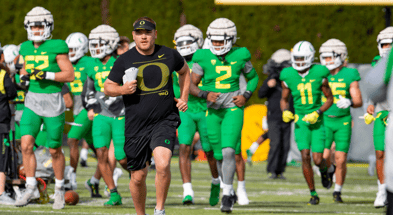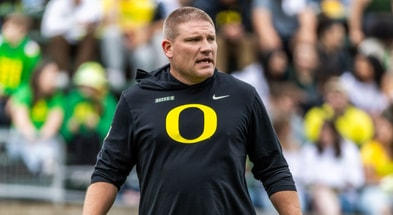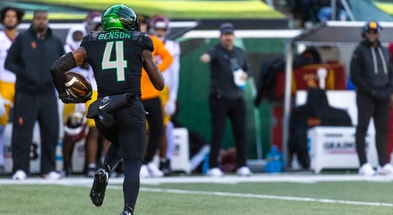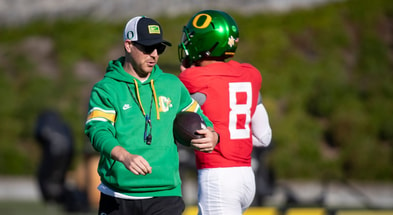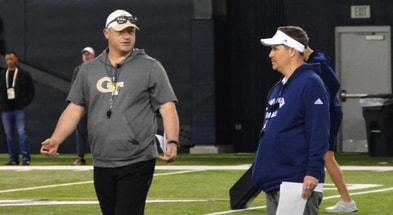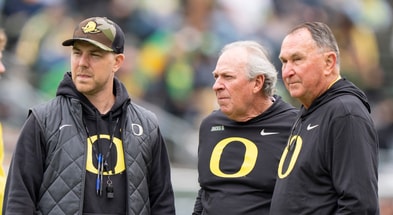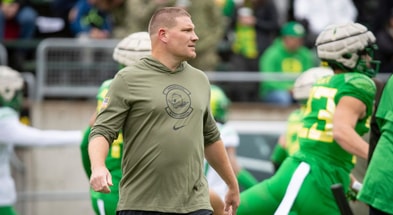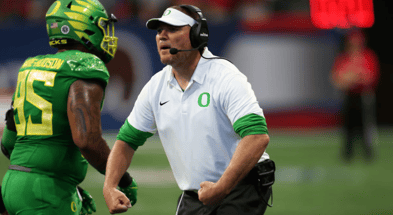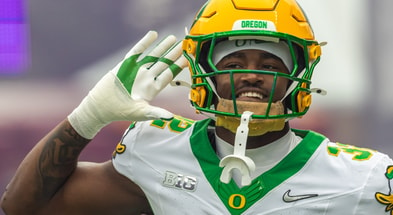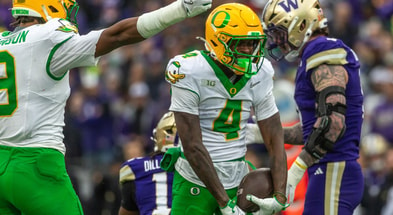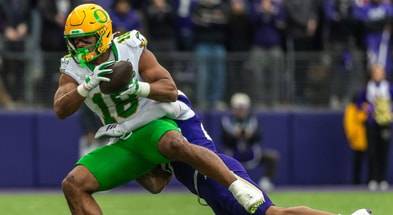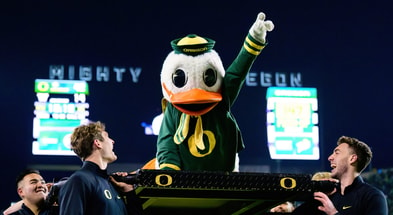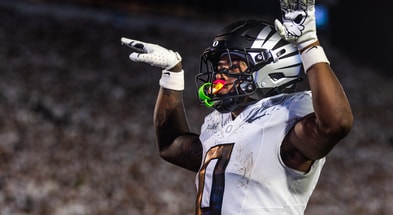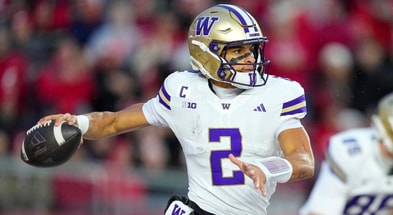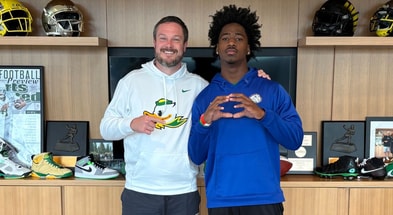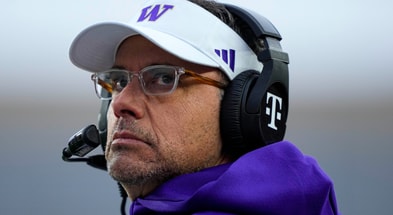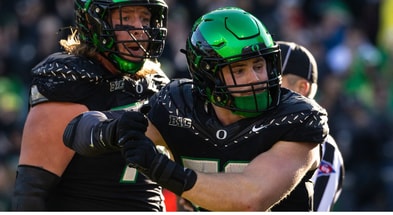Joe Moorhead discusses Oregon's vertical passing game, lack of downfield throws
Oregon’s offense seems to have hit its stride during the second half of the season. The Ducks spent the past few weeks punishing opponents with a highly-successful rushing attack.
But if there is a perceived weakness with the No. 3 Ducks’ offense at this point, it is the lack of a consistent downfield passing attack.
As a team, Oregon is 85th in the nation out of 130 teams at 213.9 yards per game. The Ducks are 78th in yards per completion at 11.95, and 75th in yards per attempt at 7.56.
There’s obviously more than one way to win a football game. Georgia is the undisputed No. 1 team in the country yet ranks just 64th in passing yards per game.
But from a sheer statistical standpoint, Oregon’s passing production is off the pace from where many fans and analysts hoped it would be this season.
During his Monday press conference, Oregon offensive coordinator Joe Moorhead was asked about the number of downfield shots the Ducks have taken over the past few weeks.
“Our pass game is always gonna be comprised of quick-gain three-step, intermediate drop-back five-step, shots down the field, and then screens,” Moorhead said. “Based on our matchups, based on the coverage we see, and what we need to do to attack a defense in a particular week will determine the number of times we throw it down the field.”
The Ducks passed for just 98 yards against Washington and 135 yards against Washington State. The UW game should be taken with a grain of salt, though. Both Anthony Brown and Huskies’ quarterback Dylan Morris struggled to throw the ball on an extremely windy, rainy night, and the Ducks leaned into their highly successful rushing attack.
Nearly one-third of Brown’s passing yards, though, did come on a 31-yard touchdown pass to Devon Williams on a deep route. Against Washington State, Brown’s longest pass was a 31-yard toss to Johnny Johnson III.
“I think the Washington game was an outlier,” Moorhead said. “Even though we did hit a couple there. But (deep shots are) always gonna be part of the construct of the offense.”
There has been heavy criticism directed towards Brown this season for his propensity to check down to receivers who are far behind the first-down marker.
Moorhead wasn’t asked about that issue specifically Monday but talked unprompted about how deep shots factor in his offensive scheme. While doing so, he provided some interesting context as to why Brown might be throwing behind the sticks so often.
Top 10
- 1Breaking
Matt Campbell
PSU working to finalize deal
- 2New
Chris Henry Jr.
5-star WR makes final decision
- 3
College GameDay picker
SEC title guest revealed
- 4
Confirmed Bowl Games
Full list of postseason matchups
- 5Hot
Most-watched CFB games
Top 10 of 2025 season
Get the Daily On3 Newsletter in your inbox every morning
By clicking "Subscribe to Newsletter", I agree to On3's Privacy Notice, Terms, and use of my personal information described therein.
“A lot of times, we call a play that’s designed as a shot,” Moorhead said. “Really, the receiver getting open, or the coverage dictates if it goes to the guy that is deep down the field.”
Moorhead pointed to a play that occurred late in the Washington State game, where Brown’s first option was a deep route on 2nd-and-12, but that route never materialized. Brown checked down and the Ducks got an 18-yard gain anyway.
“We called a shot play to (Devon Williams) and he released inside and kind of got jammed up by the corner,” Moorhead said. “(Brown) continued through his progression, which took him back to Kris Hutson on the dig route. We were able to hit that.”
Moorhead has voiced steadfast support for Brown this season, even when the senior quarterback was struggling mightily.
On Saturday, Brown ran for 128 yards on 17 carries and became the first Duck quarterback since Marcus Mariota to run for more than 100 yards in a single game.
Mario Cristobal indicated after the game that the Ducks took what Washington State gave them, and he praised Brown’s decision-making.
“I think number one is understanding of the scheme,” Moorhead said Monday when asked what makes Brown such an effective runner. “Number two, decision making, then number three is his size and speed.
“He’s a deceptively quick runner and he’s also a little more elusive than you see for a guy that size, in terms of putting his foot in the ground and making people miss. I think all those things have made him a very effective ball carrier this year.”
For whatever issues fans, pundits, and analysts have with Oregon’s lack of a consistent vertical threat, Moorhead seems to be more than happy with the decisions his quarterback is making.


